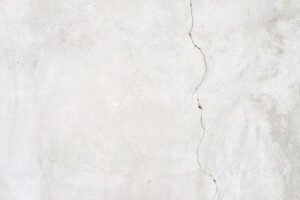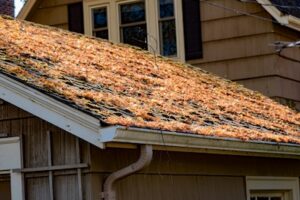Water Infiltration In the House
The walls and their infamous infiltrations is a relatively common problem, which usually plagues environments with high humidity and, consequently, ends up devaluing the property. Therefore, it is essential that you learn not only how to identify but also how to stop infiltration. So, how do you stop water infiltration in your house?
Some easy and effective methods how to stop water infiltration in the house are to waterproof the walls and clean the gutters. While the signs of water infiltration in your house are the paint on the walls peeling, water bubbles on the wall, cracks and fissures in the walls and/or floors, and mold and mildew.
So, now that you have an idea of how to identify and solve this issue, in this blog post, we will go into greater detail about these tips. As well as discuss the differences when waterproofing the house during and after the construction of the property. So, keep reading to find this out and more!
4 Tips to Identify the Problem of Water Infiltration
The property usually “indicates” some symptoms, and when these are well interpreted, you can identify the problem early on, having greater flexibility to deal with it. Here are the four signs that your home may be leaking!
1. Peeling Paint
One of the main pieces of evidence of infiltration is the open cracks in the wall. You will even notice that this can happen both inside and outside. Once your wall is grooved, this crack will cause the paint that surrounds it to wear out.
Soon you will notice the paint “cracking” and later on, you will notice that the dried layer will peel off the wall, peeling and crumbling as time goes on.
2. Water Bubbles on the Wall
You may notice the formation of some bubbles on your wall, a problem correlated to the previous one. The bubbles originate from the accumulation of moisture inside the concrete, which causes the wall to dilate, inflating the paint.
If you notice these bubble-shaped bumps, be assured that if you touch them, you can easily peel off this layer, as described in the point above.
3. Cracks and Fissures
In these cases, even homeowners who have not yet applied a coat of paint will be able to identify the seepage, as in the absence of paint, you will be able to see the grooves that cause blistering and wear directly into the bare concrete.
It is critical that you deal with this problem as soon as possible because, in the long term, seepages can even pose a structural hazard.

4. Mold and Mildew
Here are the biggest enemies of any furniture placed parallel to a damp wall. You will be able to identify these problems easily, as any furniture next to a damp wall will quickly manifest the consequences of mold and mildew, with a characteristic odor.
On the wall itself, regardless of whether it has paint or not, you will notice small or large stains, which highlight the reach of moisture and, consequently, the proliferation of fungal colonies. Note that the spots may have a greenish tinge.
How to Stop the Water Infiltration In Your Home
Well, now you are ready to identify the presence of this delicate problem on your property. Then the time will come to fight it. Remember that if you are on the verge of putting your home on the market, it is essential to solve this problem beforehand! Providing a house or apartment with infiltrations for sale or rent is synonymous with devaluation. But don’t worry; for every problem, there is a solution. So here, we are going to introduce you to three effective methods of combatting the issue of infiltrations.
1. Waterproof the Walls
Waterproofing is an infrastructure procedure commonly used in MPCHS that allows blocking the passage or admission of fluids through a given surface. That is, it is the ideal solution to combat infiltrations.
Now, we will explain step-by-step how to be done after building the property, on the assumption that you are fighting this “enemy” in an already built space. But it is important for you to know that there are differences in the process, depending on whether it occurs during or after construction, as we will show later.
Note the sequence:
- if there is paint, you will need to remove it completely, as well as the plaster layer, exposing the bare masonry
- with the masonry exposed, use the waterproofing solution to fill all the cracks you find, avoiding spaces and paths for traffic and accumulation of water
- add waterproofing complements to the roughcast and apply the product normally, using a shovel or roller
- add the waterproofing complement also in the mortar mixture and then apply the waterproofed plaster on the wall
- finish the finish with the application of paint, which may or may not have waterproofing properties, depending on the manufacturer and model
![]()
2. Clean the Gutters
This is a much simpler procedure than the previous ones, as it only requires your willingness to go up and remove the dirt from the gutters. For that, just:
- Equip yourself with a cloth or flannel and also with a brush or any other tool that has the function of a miniaturized broom. After all, it’s time to sweep the gutters
- Purchase a screened screen, found in strong, lightweight materials such as nylon or steel mesh, to apply to cover the gutters. This will keep out leaves, hail, and any other debris that causes the gutter to clog

How to Waterproof: Differences During and After Construction
Waterproofing during construction results in lower costs. This is because, when building, waterproofing is a process that precedes painting and plastering.
In a finished house, the owner only notices the infiltration when it is late, and it is necessary to destroy the paint and plaster to then apply the procedures on top and then finish with new applications.
So, if you are during the construction phase of your home, do not neglect to waterproof it, especially if you live in a known wet city. Remember that cheap is almost always expensive.
Infiltrations are usually a form of consecrated terror, whether for real estate agents, for the value of the property, or even for the durability of furniture and electronics. Still, it is important to emphasize the potential risk of fire or short circuit that a wall, in advanced cases of infiltration, can cause in the water-outlet contact.
Conclusion
So, these were our tips on how to identify and how stop water infiltration in the house. The best thing is to prevent this from ever occurring, but sometimes this is not always possible. That’s why making sure to waterproof the walls and to waterproof the gutters of your home is so integral to preventing further damage from occurring to your home. Hopefully, this helped you, and thanks for reading!
